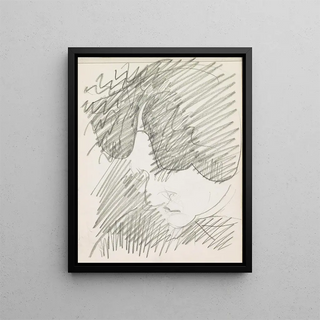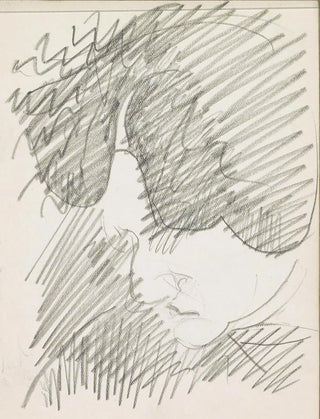Art print | Head of a woman with her hair tied up - Reijer Stolk


View from behind

Frame (optional)
Reproduction Tête de femme avec les cheveux relevés - Reijer Stolk – Captivating introduction
The reproduction Tête de femme avec les cheveux relevés - Reijer Stolk embodies a fascinating encounter between timeless beauty and artistic craftsmanship. This artwork, which draws the eye with its elegance and delicacy, offers a window into the female universe of the 17th century, while evoking deep and universal emotions. The depiction of a woman with carefully styled hair, with a face imbued with serenity and mystery, invites the viewer to immerse themselves in an atmosphere that is both intimate and contemplative. Through this piece, Stolk manages to capture the essence of femininity, while playing with nuances of light and shadow that highlight the delicate features of her model.
Style and uniqueness of the work
Reijer Stolk's style is distinguished by an exceptional mastery of details and a subtly nuanced color palette. In Tête de femme avec les cheveux relevés, each brushstroke demonstrates meticulous attention to the texture of the hair and the expression of the face. The composition, though simple, is enriched by the depth of emotions it conveys. The styled hair, a symbol of sophistication and refinement, contrasts with the softness of the woman's features, creating a harmonious balance. Stolk skillfully uses light to accentuate the contours of the face, giving an impression of life and authenticity. This artwork is not just a visual representation; it becomes an invitation to explore the psychology of the character, to feel her story, and to question her inner world.
The artist and his influence
Reijer Stolk, a Dutch painter of the 17th century, is often recognized for his ability to capture the essence of his subjects with remarkable precision. Influenced by the artistic currents of his time, notably the baroque, he manages to combine tradition and innovation in his work. His artworks, often centered on portraits and scenes of daily life, reveal a deep understanding of human nature. Stolk has established himself in the artistic landscape of his time, and his influence endures in contemporary art, where his approach to portraiture continues to inspire many artists. The Tête de

Matte finish

View from behind

Frame (optional)
Reproduction Tête de femme avec les cheveux relevés - Reijer Stolk – Captivating introduction
The reproduction Tête de femme avec les cheveux relevés - Reijer Stolk embodies a fascinating encounter between timeless beauty and artistic craftsmanship. This artwork, which draws the eye with its elegance and delicacy, offers a window into the female universe of the 17th century, while evoking deep and universal emotions. The depiction of a woman with carefully styled hair, with a face imbued with serenity and mystery, invites the viewer to immerse themselves in an atmosphere that is both intimate and contemplative. Through this piece, Stolk manages to capture the essence of femininity, while playing with nuances of light and shadow that highlight the delicate features of her model.
Style and uniqueness of the work
Reijer Stolk's style is distinguished by an exceptional mastery of details and a subtly nuanced color palette. In Tête de femme avec les cheveux relevés, each brushstroke demonstrates meticulous attention to the texture of the hair and the expression of the face. The composition, though simple, is enriched by the depth of emotions it conveys. The styled hair, a symbol of sophistication and refinement, contrasts with the softness of the woman's features, creating a harmonious balance. Stolk skillfully uses light to accentuate the contours of the face, giving an impression of life and authenticity. This artwork is not just a visual representation; it becomes an invitation to explore the psychology of the character, to feel her story, and to question her inner world.
The artist and his influence
Reijer Stolk, a Dutch painter of the 17th century, is often recognized for his ability to capture the essence of his subjects with remarkable precision. Influenced by the artistic currents of his time, notably the baroque, he manages to combine tradition and innovation in his work. His artworks, often centered on portraits and scenes of daily life, reveal a deep understanding of human nature. Stolk has established himself in the artistic landscape of his time, and his influence endures in contemporary art, where his approach to portraiture continues to inspire many artists. The Tête de






